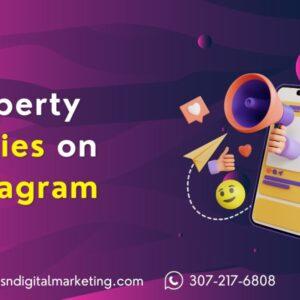Real estate professionals increasingly rely on social media platforms like Facebook, Instagram, and Twitter as core elements of their marketing strategies. Platforms like Facebook, Instagram, and Twitter allow real estate agents and brokers to engage with prospects, build relationships and increase visibility. However, many struggle to measure the true return on investment (ROI) from social media marketing.
Why Measuring Social Media ROI Matters
In real estate, time is money. As such, agents and brokers need to determine if the time and resources spent on social media are worthwhile. Tracking ROI enables you to:
- Identify which social platforms and tactics are generating results.
- Justify social media marketing spend.
- Improve your strategy over time.
- Show the impact of social media on your bottom line.
Without measuring ROI, you could waste time and money on ineffective campaigns. On the flip side, proving the value of social media can help secure more budget for social activities.
Challenges in Measuring Social Media ROI
Measuring the ROI of social media is tricky for a few reasons:
Difficulty tracking leads back to social media
If a prospect engages with your social content but then picks up the phone to call you or contact you via email, how do you connect the dots back to social media as the starting point? Lead generation is often indirectly influenced by social media.
Long sales cycles
In real estate, months can pass between a social media interaction and a closed sale. This lag makes it hard to draw a line from social activity to revenue.
Multiple touchpoints
Most buyers engage with content across many channels before converting. Social media is just one touchpoint among many like email, search, and websites.
A Framework for Measuring Real Estate Social Media ROI
Despite the challenges, you can take steps to estimate the ROI generated from social media marketing:
1. Track vanity metrics
Start by looking at vanity metrics like followers, likes, shares, comments, and clicks. While these don’t directly relate to revenue, they give a sense of user engagement and reach. Higher vanity metrics signal that your community and content are resonating.
Tools:
- Facebook Analytics
- Instagram Insights
- Twitter Analytics
2. Analyze lead generation
Look at how followers convert into leads via:
- Contact/lead forms on social channels
- Calls and emails generated from social content
- Leads captured by retargeting ad campaigns
Compare these directly to other channels like organic search and email.
Tools:
- Facebook Lead Ads
- Chatbots
- Call tracking software
- CRM lead reports
3. Connect leads to closed sales
Analyze closed sales to see which originated from a social media lead. Look at the time from the first social interaction to the close. Compare social media sales cycle length to other channels.
Tools:
- CRM sales reports
- Custom tagging in CRM
4. Calculate ROI
Add up revenue from closed sales attributable to social leads—factor in sales cycle length. Compare to costs of social media marketing and advertising.
ROI = (Gain from social media – Cost of social media) / Cost of social media
Tools:
- CRM sales reports
- Social media advertising costs
- Spreadsheets
Social Media ROI Best Practices
Follow these tips to get better data and maximize the return from your social media efforts:
- Use UTM campaign tags to track engagement from social posts to your site.
- Run targeted social media ads to capture more leads.
- Retarget engaged site visitors with customized messaging.
- Ask leads that convert to sales where they first heard about you.
- Attribute sales to multiple touchpoints using weighted values.
- Build in social media questions when surveying clients.
- Look at ROI over the lifetime value of acquired clients.
Final Tips for Measuring Social Media Success
- Focus on quality over quantity. Engagement and conversions matter more than vanity metrics.
- Be patient. It takes time to track ROI accurately. Build your measurement framework over months.
- Combine social media with other tactics. Social works best as part of an omnichannel marketing strategy.
- Keep testing and improving. Use ROI data to double down on what works and change what doesn’t.
Measuring the return on investment from social media takes work. However, it enables real estate professionals to optimize their social strategy and prove the value of social media marketing. By tracking engagement, leads, and sales on key platforms, agents and brokers can maximize their online visibility and return.









